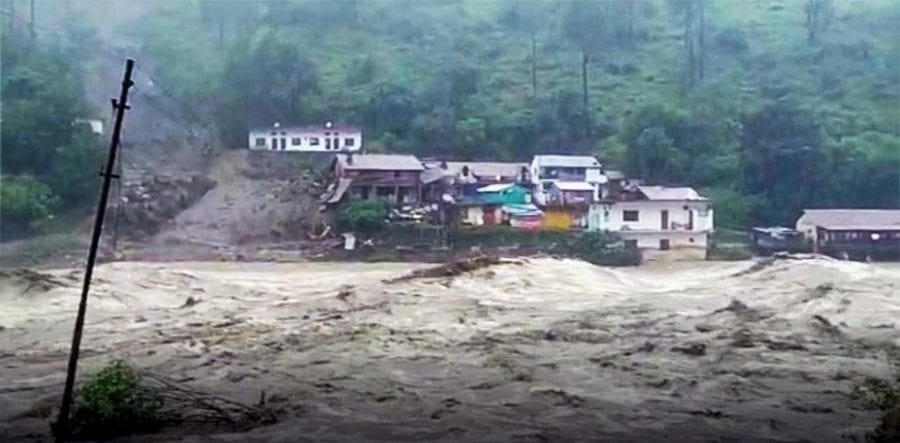
Why is Uttarakhand witnessing frequent cloudbursts? Top scientist answers
Cloudburst, which means sudden heavy rainfall in a short period of time in a given region, is not a new phenomenon for Uttarakhand, a hilly state located at the foothills of the Himalayas. However, increased frequency of the natural occurence in recent months has been attributed to unusual warming of the region, reported ‘Down to Earth’.

Cloudburst, which means sudden heavy rainfall in a short period of time in a given region, is not a new phenomenon for Uttarakhand, a hill state located at the foothills of the Himalayas. However, increased frequency of the natural occurrence in recent months has been attributed to unusual warming of the region, reported Down to Earth.
Tehri Garhwal, Rudraprayag, Uttarkashi and Chamoli districts have reported many events of cloudburst in the month of May, causing heavy damage to the hill state.
About two weeks ago, heavy rainfall triggered by a cloudburst caused severe damage to buildings in Tehri Garhwal district. The cloudburst happened in Devprayag, resulting in two local municipality buildings getting completely washed away. Fortunately, no casualties were reported but the damage to buildings and roads was immense.
Raghu Murtugudde, a climate scientist at the University of Maryland in the United States, told Down to Earth, “What is unusual in the current scenario is the very warm temperature anomaly to the west of north India over Iran, Pakistan and Afghanistan. The Arabian heat low pumps winds into the northern Arabian Sea and there has been a strong wind along the coast of Oman and going straight over Gujarat into Uttarakhand. My guess is that this is raising the chances of cloudbursts there.”
Also read: Want to save water? Know your water footprint first
Murtugudde said that the months of March, April and May were warmer than usual this time. This increased temperature resulted in a sudden drop in air pressure and brought the winds in at a very high speed, he said.
Murtugudde’s contention of extreme and unusual warming in this part of the country means climate change is happening for real and is making its presence felt more prominently. Also, cloudbursts are not very common in Uttarakhand in April and May. Generally they occur during the southwest monsoon season that begins in June.
PODCAST: Warning system, environment study may have prevented Uttarakhand tragedy
Besides the development of a low-pressure ridge all over the region also increase the probability of cloudbursts.
An Earth Science Review study suggests that Uttarakhand is extremely prone to cloudburst. Nineteen of the 30 major cloudburst events reported from the southern rim of the Himalayas occurred in Uttarakhand.


